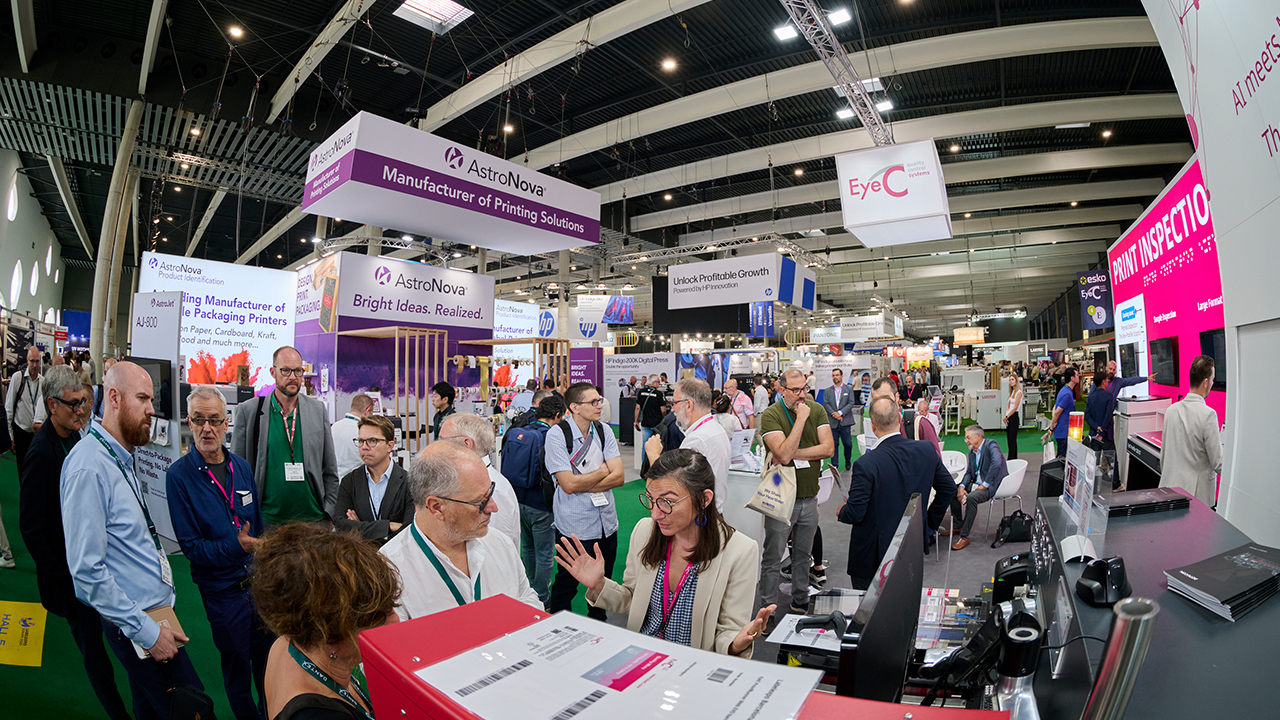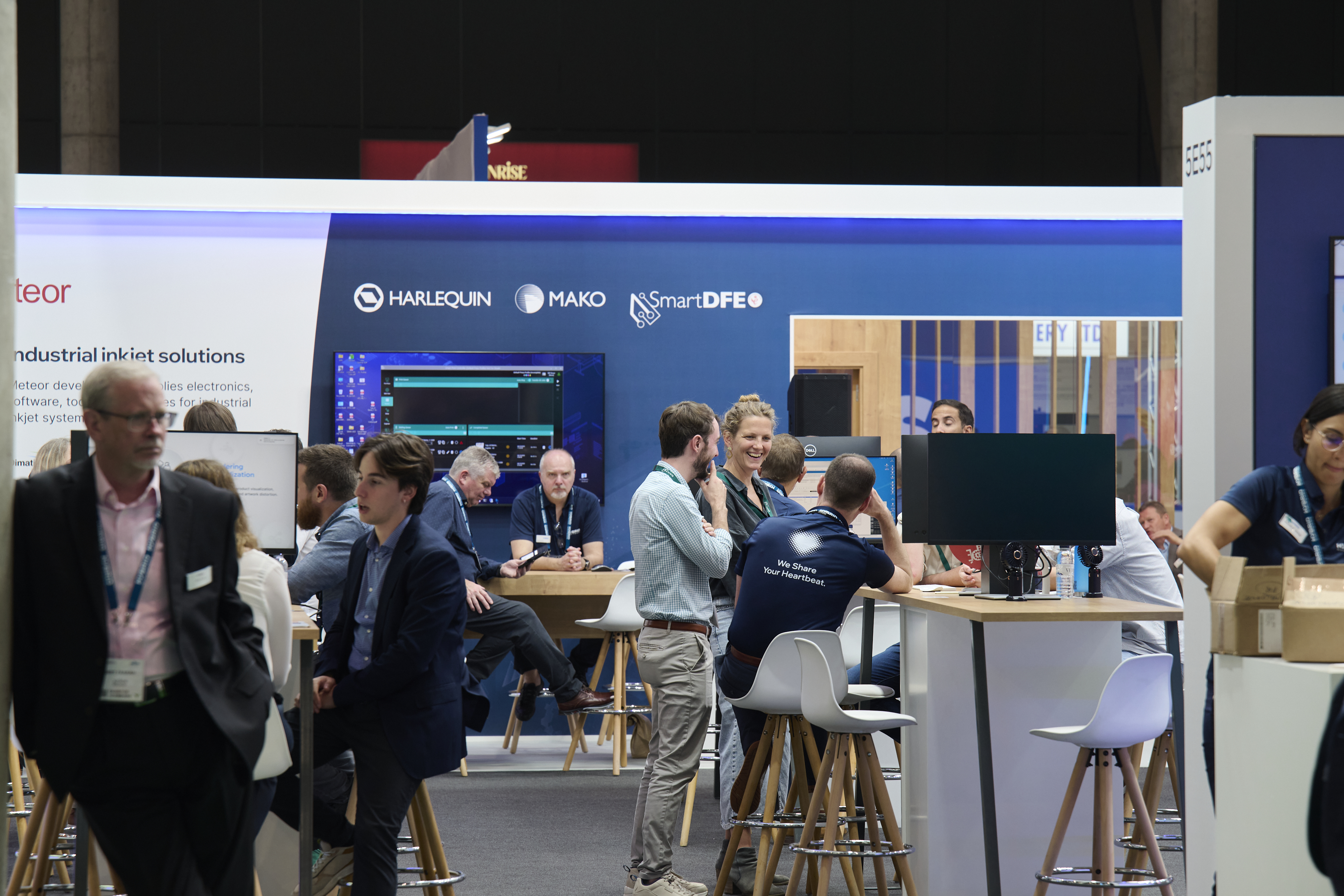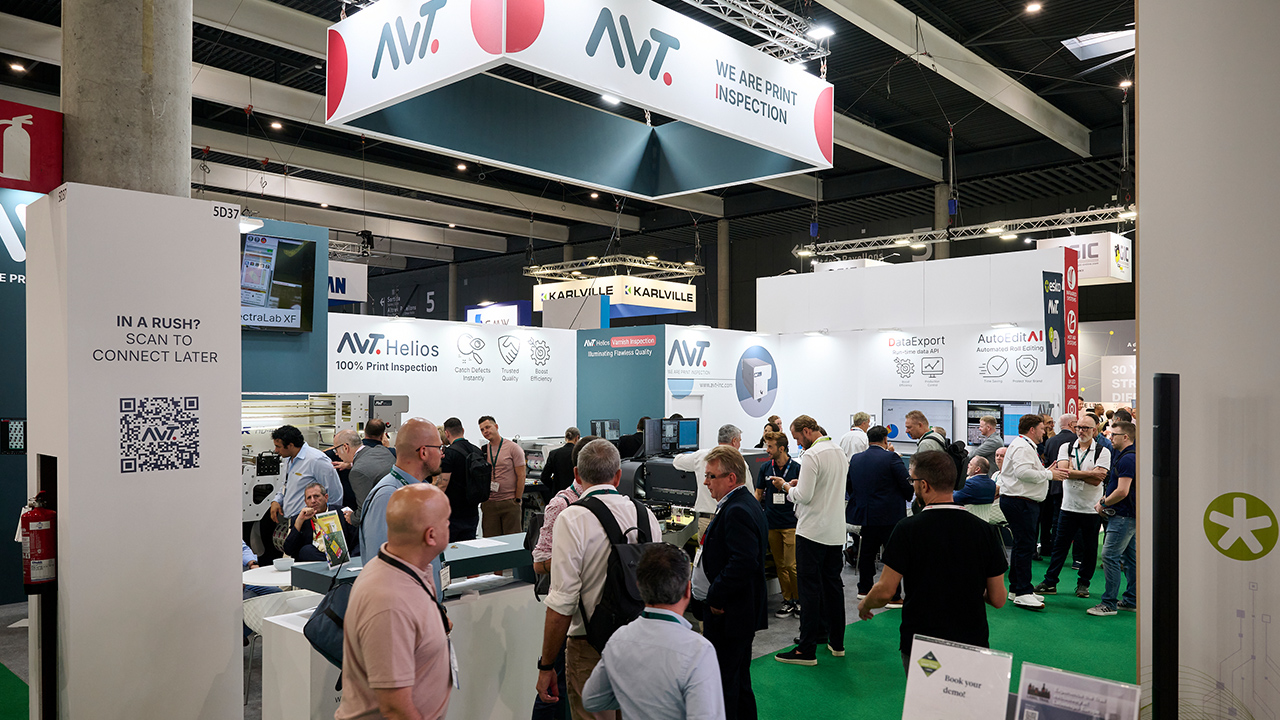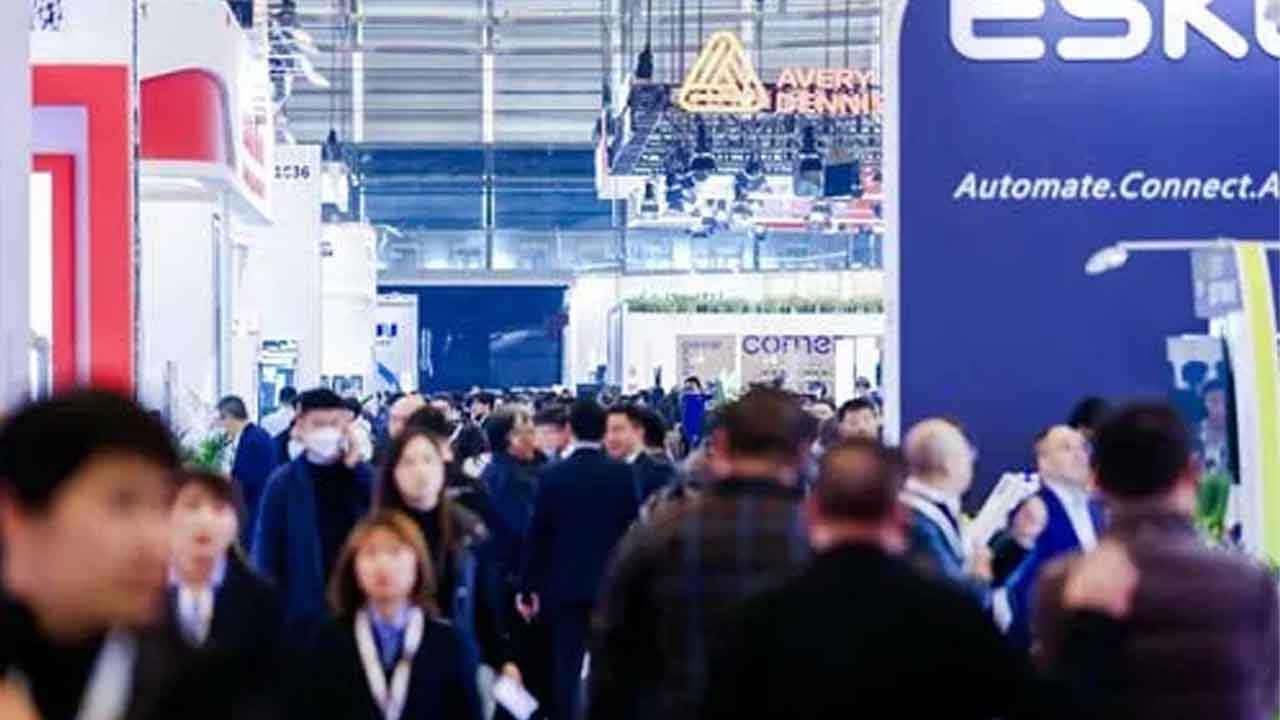Labelexpo Europe 2025: Workflow and inspection
By introducing new AI capabilities, moving software onto the cloud and integrating with other systems across production facilities, workflow software and inspection technologies are offering greater levels of automation, accessibility and waste reduction.

At Labelexpo Europe 2025, workflow and inspection technology suppliers highlighted integration capabilities, introduced cloud-based versions of their software and showcased how AI can reduce waste, save time and improve accuracy. New products and tools launched at the show make technology easier for operators to use, mitigate cybersecurity risks and automate steps in complex job orders.
These innovations are helping converters navigate pressures in the industry, as they face hiring challenges, as well as growing demand for shorter runs and faster turnaround times. Converters are looking to implement automation to improve their efficiency and reduce their reliance on manual labor, and workflow and inspection technology are enabling them to do that.
Reducing manual labor
Software plays a unique role in helping converters implement
automation, as it drives job processes across the entire production workflow. It improves efficiency and reduces manual labor by accepting customer orders, streamlining pre-press work and optimizing workflows.
Ultimate Tech made its debut at Labelexpo Europe 2025. The
company, an established player in the commercial printing space, is expanding into labels, underscoring the ongoing convergence in the printing industry.
Having come from the commercial printing industry, where
smaller margins drive print shops to implement significant automation, Ultimate Tech is well-versed in using its technology to reduce its clients’ need for manual labor.
Ultimate Tech undertook a significant amount of R&D and
enhanced its technology with nesting and step-and-repeat capabilities before entering the labels market. In the label space, its software is targeted toward converters that need technology that’s flexible and easily automated. At Labelexpo, Ultimate Tech highlighted its Ultimate Impostrip software, which is capable of integrating with web-to-print systems and is available on the cloud. Impostrip can receive and batch jobs and automatically optimizes imposition. It operates with printing and finishing equipment and can handle variable data printing.
‘When customers are doing short runs, that’s when they have the biggest workflow challenges because there are more files to deal with,’ Ultimate Tech CEO Julie Watson says. ‘When you have fewer files, you still shouldn’t be doing it manually, but you don’t notice it as much. As soon as you have more varied work, that’s when customers realize, [they] need to find a solution. [They] can’t keep doing all of this manually. The label industry is getting more and more of this on-demand work.'
Infigo, a web-to-print e-commerce platform provider, enables converters’ clients to view products and pricing, submit orders and approve jobs. Infigo aims to make short-run work easier for converters to accept.
‘What we’re trying to enable them to do is take smaller orders and smaller runs without turning them away or losing money on them. Because if you’ve got someone that wants 250 labels or even 5,000 labels, and you’re having to email them back and forth, give them a quote, design it for them, touch it up for them, go back and forth and touch it lots of times, you’re losing money on it every time,’ says Alex Bowell, managing director at Infigo. ‘We’re trying this automated, hands-off approach.’
Suppliers are also using AI to reduce converters’ need for manual labor. HP, for example, presented HP Nio, an AI agent launched earlier this year. HP Nio works within HP PrintOS, connecting with HP presses to provide insights and detect issues, optimizing production and increasing productivity.
“When customers are doing short runs, that’s when they have the biggest workflow challenges because there are more files to deal with”
Hybrid Software introduced several AI-powered products
that increase efficiency: Matches, a tool that searches and finds print jobs with similar components, available to CloudFlow users; SmartDFE, a technology for digital presses that optimizes jobs to increase press productivity; and jAlmes, which automatically creates orders, particularly reorders, from emails.
Hybrid Software also announced its acquisition of Conics, a Belgian software development company. As a part of Hybrid Software, Conics will remain its own business unit. Conics brings project management and consultancy expertise to Hybrid, as well as AI knowledge. At Labelexpo Europe, Hybrid launched a new joint product with Conics called the Digital Pouch Factory. This technology links with CloudFlow and enables users to edit and create 3D models of packaging.
Hybrid Software also presented Packz Max, an upgrade to the
company’s PDF editor, Packz technology, which integrates RIP capabilities, and CloudFlow Colorspace, a color management tool.

Cerm highlighted how its software can help converters
automate, including during daily live Studio Session presentations.
The company introduced its new Cerm Copilot, an AI tool that integrates into its MIS. Its capabilities include converting emails into job orders, generating reports and making Cerm MIS easier for new employees to learn how to use.
Additionally, at its first Studio Session live presentation at the show, Cerm featured its Scheduling Optimizer, an AI tool that helps clients maximize productivity when scheduling various jobs. At Labelexpo Europe, Cerm launched the newest generation of its Scheduling Optimizer.
With Labelexpo’s official expansion into folding cartons, Cerm presented an exclusive premiere of its Cerm MIS Production Flows, which automates imposition for folding cartons. Other technology featured at Labelexpo Europe include Cerm’s new user interface, Smart BI tool and Lumi AI assistant.
Integration
Suppliers for workflow and pre-press software, as well as for machinery, highlighted how their technology can integrate with other systems on the production floor. This integration enables greater levels of automation and makes data more insightful.
‘One aspect that we always highlight in our developments is automation. One of the ways to get automation is integration. Integration with pre-press systems, integration with production equipment, integration with different systems that people have in their facility,’ says Peter Heyse, head of product management and software development at Cerm. ‘From the moment you can start integrating this, we bring automation, we avoid additional manual work, we avoid mistakes and we streamline the whole process.’
Amtech Software, which acquired Label Traxx last year, showcased its products, such as Scorekeeper, which integrates with shopfloor equipment to measure actual job performance against estimated job performance, and a new tool called Visual Analytics, which uses continuously updated Label Traxx data to create dashboards and reports.
Grant Emison, product manager at Amtech Software/Label Traxx, notes that integration capabilities are becoming increasingly important in label and packaging software.
‘It’s important to use best-in-class software across the different functions within a company. Label converters, traditionally, haven’t been doing that, but there’s greater and greater use of different software packages for different functions,’ Emison says. ‘Being able to exchange information back and forth with those packages is really important.’
Moving to the cloud
Exhibitors throughout Labelexpo Europe 2025 noted that converters are looking to move their data to the cloud, rather than keep it stored on their own servers.
According to Paul Cooper, vice president of Europe and Asia at eProductivity Software (ePS), cloud-based or browser-based software is easier for users to manage, as it transfers responsibility for cybersecurity and updates to the software supplier, rather than the client.
ePS highlighted its own move to the cloud at this year’s Labelexpo, where it launched a cloud version of its software.
‘Traditionally, when you have an on-premise solution, a local customer has to become an IT expert, has to have the capability to not have that threat or not have that risk,’ Cooper says. ‘By hosting that solution, we take care of all that. All that security. That uptime, in terms of making sure there isn’t downtime and the system’s always going to be available. We take all that responsibility, and also, the upgrades become our responsibility.’
Other new capabilities that ePS featured included its partnership with CarbonQuota, which enables clients to provide data about the environmental footprint of their products in quotations. Additionally, ePS presented its new Radius Hub platform, a customer portal. This platform is customized with converters’ branding, allowing them to share their products and for their customers to make orders, among
other capabilities.
“One of the ways to get automation is integration. Integration with pre-press systems, integration with production equipment, integration with different systems that people have in their facility”
Esko highlighted its technologies that are now available on the cloud. Since introducing the Esko S2 cloud platform last year, which provides the benefits of the cloud such as AI integration and easy scalability, the company has continued to lean into cloud technology. For instance, this past summer, Esko launched its WebCenter Pack, a cloud-native version of Esko’s Web Center product, enabling customers to upload and preflight jobs. Esko also featured its cloud-native technology, Print Clone, that can perform color matching from a printed sample of packaging. Rather than spending time trying to color-match a printed sample through trial and error, converters can match the color on the first attempt, creating a PDF that can be sent to a digital printer. This saves on material and ink and reduces press downtime.
Bjorn Willems, senior director, global software sales at Esko, says that industry consolidation and AI, which integrates well with the cloud, are motivating companies to move to the cloud.
Theurer also featured its browser-based software, as well as its mobile technology. This mobile technology includes its Logistics App for warehouse management and its C3 Mobile CRM.
Color management
Many of the same trends that exist in workflow and pre-press software, such as automation and integration with other
systems, exist in color management software as well.
ColorConsulting showcased the new version of its Color Software Suite, featuring improved performance for its automated color-matching technology. The company also provides connector software, which enables integration with an ERP.
GSE Dispensing is using its technology to advance both automation and sustainability for its clients. The company showcased several different ink dispensers, as well as its Ink Manager (GLM) software. The software helps improve efficiency and reduce waste by tracking inks. It can also automate various tasks, such as purchasing and creating color recipes, and is capable of integrating with ERP systems. GSE’s data collection capabilities also assist with sustainability reporting.
Inspection
Inspection technology is becoming a crucial source of data, integrating with workflow systems to provide converters with a more comprehensive understanding of challenges in their processes.
At Labelexpo Europe 2025, AVT launched Data Export, a data collection technology. The company also showcased its inspection system for labels and narrow web, as well as its embellishment and varnish detection technology, which AVT introduced at Labelexpo Americas 2024.
Data Export is capable of integrating with other systems that collect data, resulting in more information insights. The response at Labelexpo Europe to this technology was positive, the company says, with AVT expecting dozens of orders.
‘The majority of the big printers in the world today already have some kind of data system,’ AVT product manager Aviram Vardi says. ‘It can be an MIS, management information system. It can be an MES, which is more of a performance analysis. But if they only have the data about how many meters or how much time, they don’t know the root cause of the problem or what caused them.’
By integrating AVT’s inspection data with other press production data, the data paints a fuller picture. For example, AVT’s inspection data about a problem with a varnish, combined with data indicating that the issue occurs on a specific press or with a particular material, would be more beneficial to converters.

BST also highlighted its ability to collect and handle data from its inspection technology. The company introduced TubeScan V8, the latest version of its inspection technology, which provides inspection throughout the whole print production process. It’s also capable of variable data printing inspection.
New to Labelexpo Europe 2025 is TubeScan’s Multiplexing capability, which uses different types of light simultaneously for inspecting different components, such as RFID technology and embellishments.
“Traditionally, when you have an on-premise solution, a local customer has to become an IT expert, has to have the capability to not have that threat or not have that risk.By hosting that solution, we take care of all that”
EyeC exhibited its inspection technology for the entire print production process. This included a new version of its Proofiler Graphic pre-press inspection technology, which can integrate with other systems and compare print-ready files against approved artwork files. This cloud-based technology is expected to become available at the end of 2025.
EyeC also showcased its ProofRunner in-line inspection system, capable of integrating with printing and finishing machines. EyeC featured the ProofRunner Highlight with AI technology, as well as its ProofRunner Evo, a baseline system, also with AI, that is modular and can be upgraded to the Highlight or Highlight HD.
EyeC pre-trains its AI inspection technology using data from partners, enabling the technology to recognize which defects are significant and allowing press operators to work more efficiently.
Erhardt+Leimer presented its SmartScan 200 percent inspection technology, which features new capabilities, such as tools to measure web width and the position of RFID antennas, as well as a new PDF comparison tool.
The company also presented its Elscan OMS5 web monitoring system, which became available on the market earlier this year. It includes two high-resolution cameras, each with a distinct field of view. The new version of this web monitoring system is more intelligent, with new functions such as Delta-E color measuring.
DecoSystem exhibited the new version of its CIS sensor for its Sentinel inspection systems, capable of up to 900 DPI. This is an upgrade from the 600 DPI of the previous version. Decosystem also introduced Sofia, its AI platform that reduces false error detection by more than 70 percent and classifies errors.
Nikka Research’s inspection technology supports automation by creating detailed reports on inspection data and by integrating with other systems. The company specializes in customized systems; for example, if a converter has a large client whose products require a specialized inspection system, Nikka Research can provide that.
Unilux held live demonstrations of its UniPrint inspection system, as well as its handheld and stationary stroboscopes to detect defects on the press. The company also featured LED UVX strobes, which can verify security features and UV-visible inks at full production speeds.
Baldwin, a subsidiary of BW Converting, featured its Print Quality Verification (PQV) inspection system, with its new 4.0 version that brings greater levels of automation and ease of use. With a new interface, the PQV 4.0 automates Delta-E color monitoring, barcode recognition and sensitivity and lighting presets. Essentially, all an operator needs to do is indicate if they want to use it and what tolerance to set it at. This allows an operator who doesn’t have a lot of training to operate the system.
‘It’s about automation,’ says John Cusack, a product line leader at Baldwin. ‘It’s about being able to support the emerging technologies, digital hybrid applications. Inspection systems inherently manage a lot of data, so as a business, we’re very well adapted to the new digital world.’
Stay up to date
Subscribe to the free Label News newsletter and receive the latest content every week. We'll never share your email address.


